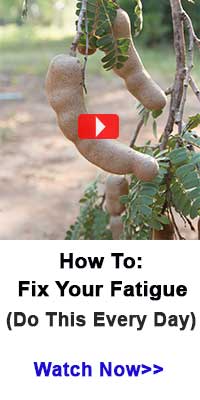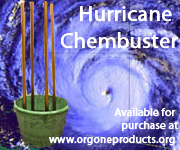A post submitted by CGI member Dave68.
**********************
Each time I go to the supermarket or the gas station, I am reminded of the fact that prices for daily needs have not gone down. As I look around me, I also see more and more pan handlers, homeless, and poor people in areas where they were not seen before.
On the other hand, mainstream media keeps pointing to increased participation in the job market, rising stock values, and other indicators the US economy is booming. This, in turn, has led to an increase in interest rates in a time when people are still trying to get back on their feet.
While there may be some promising signs that our nation is becoming more productive, there are also some very troubling signs that simply making money isnít enough. In fact, we may well be headed for a time just about every prepper dreads Ė a time when you cannot use money to buy the necessities of life simply because things like food, water, and even clean air are no longer available. A nationís economy is like personal finance in the sense that money counts for nothing if you donít have something useful to buy. From that perspective, the United States, and perhaps the entire world may be close to an epic economic collapse. Have a look at these six signs and see if you can spot them in your own town or city.
1. Food Insecurity
No matter whether you are concerned about a blizzard, a hurricane, or civil unrest, the first supplies you are likely to think about revolve around food and water. In fact, you may have a few cans of beans, pre-packaged foods, and other items on hand that you donít even bother eating because you are saving them for a crisis.
If you have ever gone to the supermarket just a day or so before a hurricane or other pending weather event, you already know that it becomes just about impossible to get certain items. For example, just about all the water will be gone, including the more expensive brands that collect dust for months on end. Likewise, you are likely to find empty shelves that usually hold beer, alcohol, (I always find that one to be a surprise because commercial alcohols have very little, if any medicinal value when compared to the historical herbal wines!) canned food, tomato sauce, and just about anything that doesnít need heat for preparation.
During and after a relatively short-term emergency, the shelves may be restocked in as little as a day or two, or FEMA or some other organization will begin delivering foods as quickly as they can get into the area. While these occasions may cause you to give some extra thought to having larger food supplies on hand, they can also lull you into a false sense of security. By this I mean no matter how bad these situations may be, you will always have the hope that someone in a less damaged area will find a way to deliver food to you or rescue you from the situation.
These days, relatively few people realize a food shortage catastrophe is looming, and, of those, even fewer believe itís serious enough to take steps towards self-sufficiency. For food and water needs. Here are some signs that even mainstream media canít hide when it comes to the looming food shortage:
Catastrophic floods, droughts, and other severe weather prevent the planting of spring, fall, and other crops. You have only to look at the weather this spring to see that there are many areas where food crops cannot be planted. This wonít just affect produce and other plant-based foods, it also affects animal farms that rely on grains and other plant-based foods for their livestock.
We canít close off trade with Mexico because we import too much food. Of all the obvious signs that our nation cannot feed itself; this is one of the worst. The fact remains years of bad trade deals and improper regulation of farms in the United States got us into this mess. Getting out of it is likely to cause food shortages and a few other problems.
Many foods, including meat, are shipped to China for processing before being sold in the United States. If you thought losing the capacity to grow food was bad, the inability to process it is even worse. Nevertheless, once again bad trade deals signed by other administrations make it cheaper to send our farm goods overseas instead of keeping the food, and the jobs in this country where they belong.
The cost of staple foods is going up. While the cost of garbage, toxin filled foods like soda and junk food are constantly going down, the prices of whole meat, canned vegetables, dried grains, and other vital foods is going up steadily. Right now, the average price of canned vegetables has risen anywhere from .10 cents to .20 cents per can. You can expect that to double or triple by the fall and go even higher in the winter months. If the prices stay the same, rest assured, the can size will be smaller, or the cans will have more liquid in them.
The quality of fresh produce is going down. Fresh produce doesnít last more than a day or two, if you can get it to ripen without it rotting first. These are all signs food is being kept in cold storage, and only released in smaller quantities.
Now, let me tell you a story. I grew up in a community where many people provided food for themselves and their family through hunting and gardening. For us, the garden wasnít a hobby, it was a serious (albeit enjoyable) endeavour that was meant to provide enough food for both short term meals and longer-term preservation. As a child, I could not fathom a place in which you couldnít just go out to the garden and pick a few beans or wander off to another place and grab some wild strawberries or raspberries while they were in season.
At the risk of sounding old, I remember well events like Live Aid and Hands Across America. Nevertheless, I could not imagine what it meant to be in a place like Ethiopia or other nations where famine took millions of lives, and still does. In school, we had a teacher that asked us what we thought could be done about the famines. Here are some of the answers my classmates came up with, and what our teacher told us:
Grow plants for food Ė that wasnít going to work because most of the areas where the famines were hitting had a severe drought or flooding, so no crops could be planted.
Hunt animals for food or raise them Ė no help there because the wild animals were either all dead or had moved on well beyond the famine zone. Likewise, the domesticated animals had all been consumed because there was no grain or other food for the last of them.
Walk (if you had to) out of the famine zone and get to some place that had food Ė Right about there our teacher sighed and went silent for a moment. He finally said, what do you not understand about starvation? Toddlers and young children cannot simply walk miles to get to food, and adults already weakened from weeks of limited food access canít carry them. They are trapped where they are, because there is no food nearby, and possibly not even in the entire country.
From that day forward, I have asked myself repeatedly, what do you do when there is no food anywhere? What happens when the supermarket shelves are permanently empty, there is no edible food left to dumpster dive, no wild plants to consume, no animals or fish to hunt, and just flat out nothing left to eat? If there is one thing, I learned at school that day, it was you must think hard about these things and figure out how to grow food in impossible situations. Here are some things that I have tried and worked with over the years that may be of use during extended periods of food insecurity. The sooner you try these things and develop them into fully sustainable systems, the better chance you will have of being able to feed yourself and your family.
Indoor and container growing Ė it does not matter why global weather patterns are shifting drastically. The fact is, they are happening, and if we and our families are to survive, we must have food. Rather than try to garden outdoors, you will need to be able to grow food in an indoor setting. This will reduce the risk of loss from flooding (if your home survives, the plants will too), drought, and theft.
Micro gardening Ė chances are, you already know that MREís often have a much denser nutrient profile than regular foods. However, when those, and your other supplies run out, you will still need to find some way to feed yourself. Seed sprouts can have as much as 5 Ė 50% more nutrients than full grown plants. Learning how to micro garden and storing viable seeds for that purpose can offer you a tremendous advantage in times when no other food is available. Every part of a sustainable indoor garden should include at least a few plants that produce prolific seeds, that will, in turn, make edible sprouts.
Aqua and hydroponics Ė You would be amazed at how small water based growing systems have become these days. When combined with just one or two fish, you can grow a larger number of plants in a very small area. Depending on the species of fish, you may also be able to breed them and then use them for food. While it does take some work and effort to set up a water-based food production system, it is worth the effort.
Insect farms Ė If you donít have a lot of money, and are limited in room for growing plants, insects are some of the most nutrient dense organisms on Earth. Grasshoppers, ants, and other small insects can be raised on garbage scraps, in shoeboxes, or even small aquariums. As an added benefit, if someone does invade your home looking for food, they will never think to steal the insects. Just make sure that you buy insect eggs from places where they have not been exposed to pesticides. Unfortunately, the rampant use of these poisons is making it harder and harder to rely on wild insects as a food source.
Donít waste food. Did you know that almost 1/3 of all food that people purchase in the store is thrown out? There are many places where people waste food. Here are some places where you might be wasting food. If you can tighten up on these areas, and focus on alternatives, you will save money and have a better chance of choosing supplies that will help you get through until you can grow enough food sustainably.
2. Water Shortages
When you hear about floods, hurricanes, and rising ocean levels, it may be hard to believe that potable water is becoming a rarer commodity every day. Here are some things that are rapidly leading up to a water shortage of epic proportions:
Not so long ago, the Midwest was a ďdust bowlĒ that could not be used to grow many of the foods we take for granted. This was all changed by the discovery of aquifers lying beneath the surface that were used to irrigate the land. Today, those aquifers are being rapidly drained, and will soon fail to produce sufficient water for the crops growing above them. Because aquifers can take decades to centuries to fill up, there is simply no way to fill them back up. Given the amount of land that needs to be irrigated, it is neither feasible nor practical to pipe water into these areas.
Major waterways are polluted beyond use. No matter whether dumping trash, factory farm runoff, mines, pipeline leaks, or nuclear reactor leaks contaminate the waterways, the fact remains it takes a lot to make contaminated water fit to use for daily needs. Today, every major river, and most streams, ponds, lakes, and other natural water resources are polluted. To add insult to injury, underground water sources have also been polluted by leaks from factories, fracking, and other industries. The bottom line is when there is no clean water left to drink, none of these activities will matter to those who are left in the area and are dying of dehydration. If you think it canít happen in your town or city, take at the water supplies that havenít been treated by municipal water treatment companies. Sadly, many people that have well water near towns, cities, or major industrial projects can tell you that surface water, and even many of the deeper water wells now produce foul smelling, cloudy water.
Increasing number of laws making water capture and water wells illegal. When someone else controls your access to water, they effectively control every area of your life, and your ability to survive. The more laws aimed at preventing you from securing water, the surer you can be that some major economic crisis is coming in which those who control the water intend to do whatever they want with you and your loved ones.
As with the people dying from famines, there may be no place you can go when potable water supplies run out. If you are to have a sustainable source of food, you must also have water. Here are a few ways that you can ensure a steady supply of water:
If you have a rain capture system, make sure you also have a means to purify the water as well as distil it. In most cases, purification is enough, and will also help keep vital minerals intact in the water.
Build or buy a system that will capture water from the air.
Make sure you know how to use plastic and pits in the ground to pull water from the soil.
Learn how to conserve and reuse water as much as possible. As a place to start, consider that 20% of the average water usage in the home goes to flushing the toilet.
Grow some edible cactus and succulents. These plants all store water in their leaves and other areas and can do so for years on end. If you can find plants that will also store away cleaner water than they take in, you will be even better off. For a faster growing plant that also stores a lot of water, try watermelon.
3. Fuel Insecurity
Today, many people think nothing of going 10, 20, or more miles to go shopping, seek medical care, or work. We also live in an age where others think nothing of flying hundreds to thousands of miles to travel. Or receive products from all over the world. This includes purchasing food online as well as many other household goods that used to be purchased primarily from local stores that were within walking or bicycle distance. Quite frankly, even a small fuel shortage would have immense repercussions for just about every household. Here are some signs that we may have a major fuel shortage within the next 2 to 5 years:
Read the rest of the article BELOW:
https://prepper1cense.com/2024/07/17/6-signs-to-economic-collapse-accelerates-mainstream-economists-are-struggling-to-hi







































